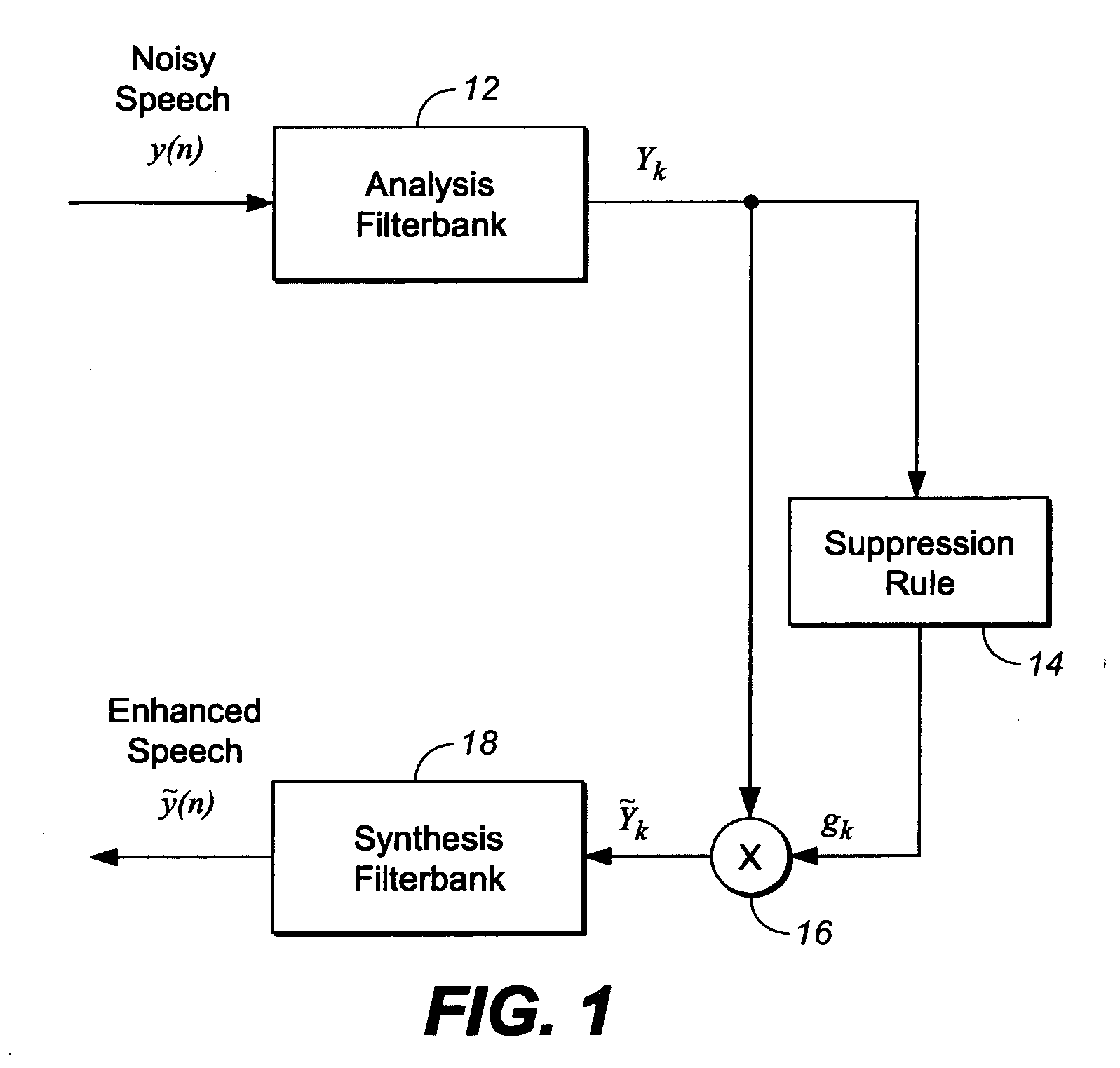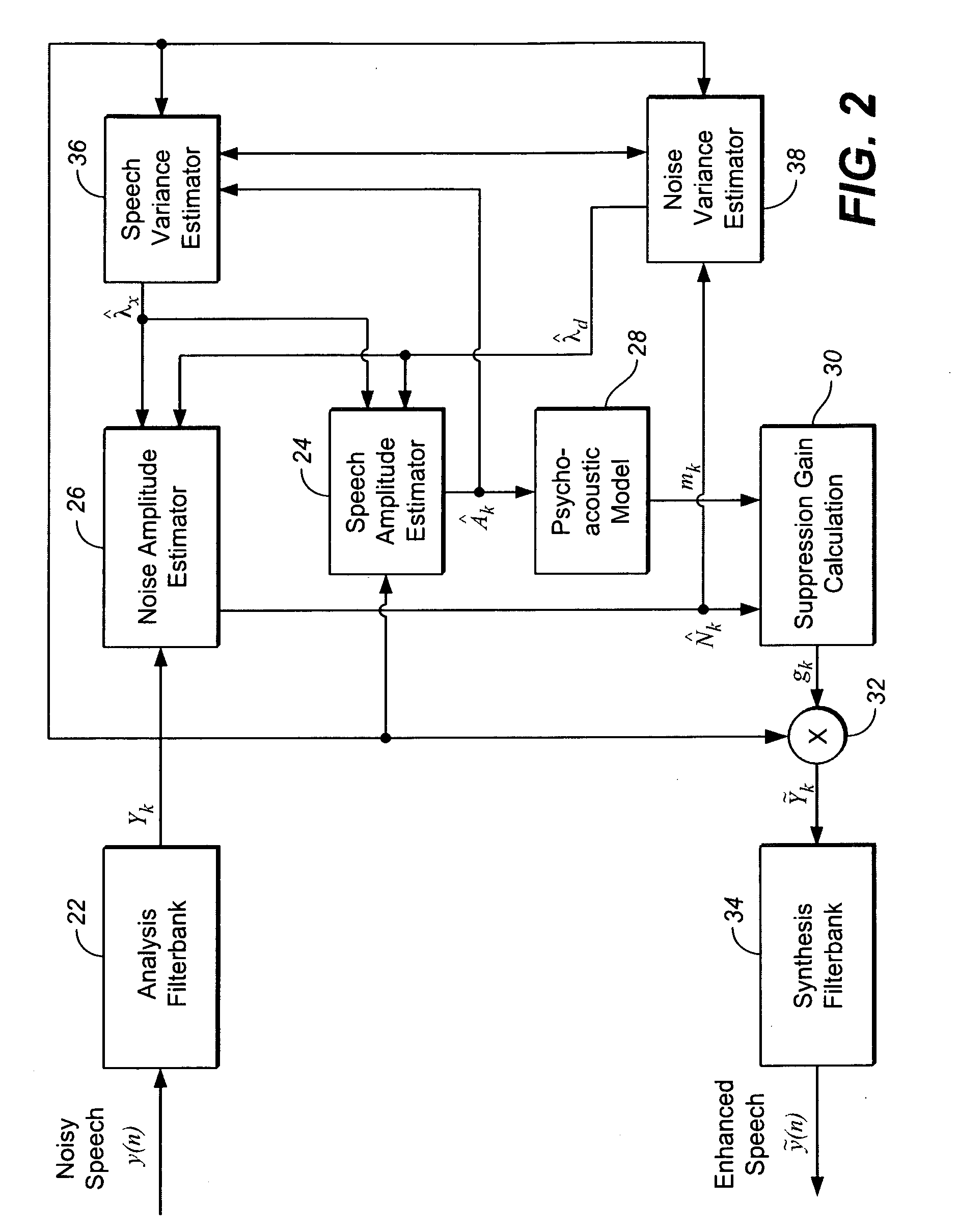Speech Enhancement Employing a Perceptual Model
a perceptual model and enhancement technology, applied in the field of audio signal processing, can solve the problems of adversely affecting reception quality, environmental noise everywhere, and noise in the world, and achieve the effects of enhancing speech components, reducing the gain of ones, and enhancing speech in audio signals composed of speech and noise components
- Summary
- Abstract
- Description
- Claims
- Application Information
AI Technical Summary
Benefits of technology
Problems solved by technology
Method used
Image
Examples
Embodiment Construction
[0032]A glossary of acronyms and terms as used herein is given in Appendix A. A list of symbols along with their respective definitions is given in Appendix B. Appendix A and Appendix B are an integral part of and form portions of the present application.
[0033]This invention addresses the lack of ability to balance the opposing concerns of noise reduction and speech distortion in speech enhancement systems. Briefly, the embedded speech component is estimated and a masking threshold constructed therefrom. An estimation of the embedded noise component is made as well, and subsequently used in the calculation of suppression gains. To execute a method in accordance with aspects of the invention, the following elements may be employed:
[0034]1) an estimate of the noise component amplitude in the audio signal,
[0035]2) an estimate of noise variance in the audio signal,
[0036]3) an estimate of the speech component amplitude in the audio signal,
[0037]4) an estimate of speech variance in the au...
PUM
 Login to View More
Login to View More Abstract
Description
Claims
Application Information
 Login to View More
Login to View More - R&D
- Intellectual Property
- Life Sciences
- Materials
- Tech Scout
- Unparalleled Data Quality
- Higher Quality Content
- 60% Fewer Hallucinations
Browse by: Latest US Patents, China's latest patents, Technical Efficacy Thesaurus, Application Domain, Technology Topic, Popular Technical Reports.
© 2025 PatSnap. All rights reserved.Legal|Privacy policy|Modern Slavery Act Transparency Statement|Sitemap|About US| Contact US: help@patsnap.com



